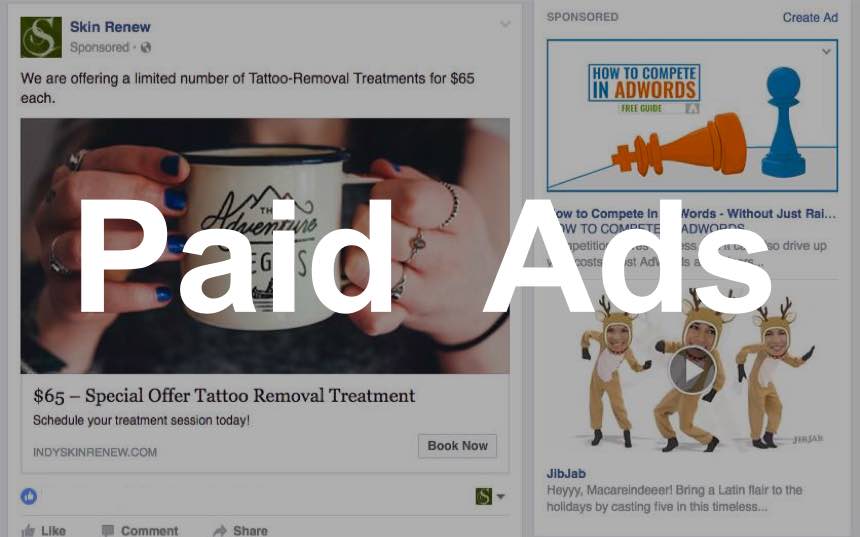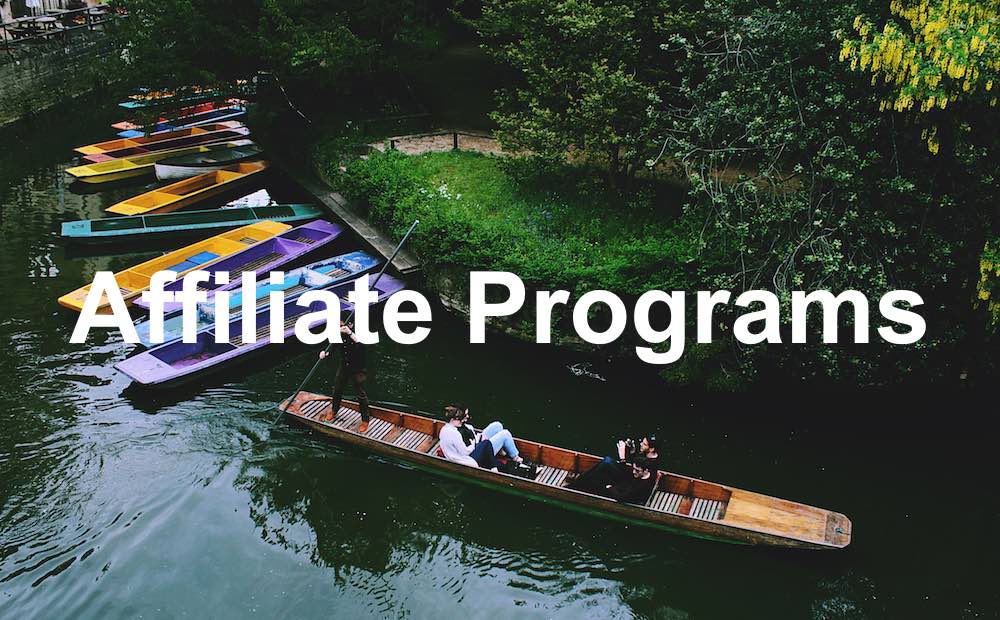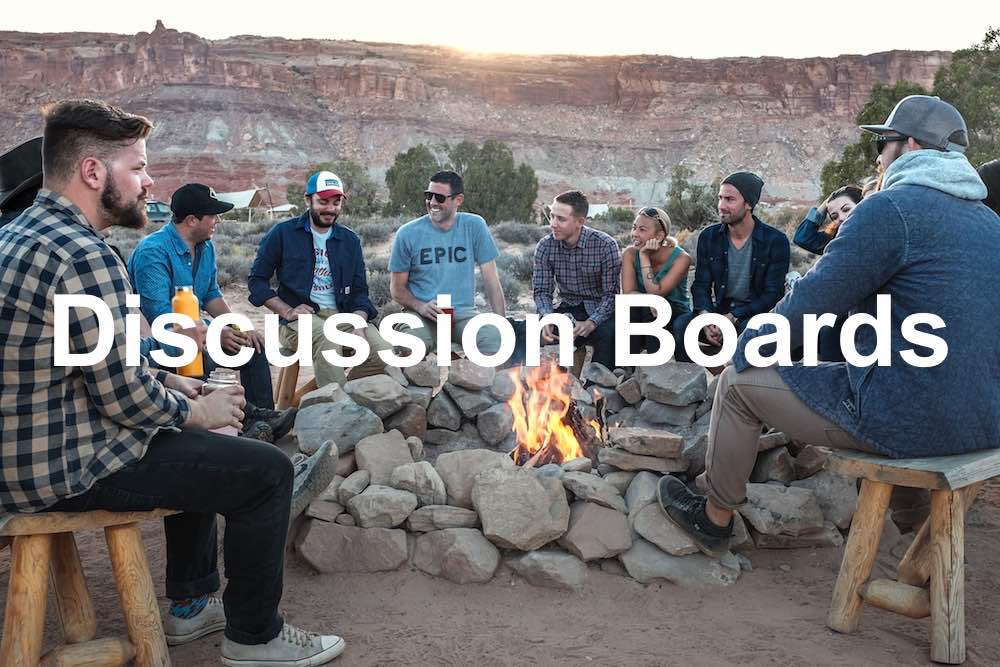How to Attract More Targeted Traffic

How to Create Inbound Campaigns that Convert
December 5, 2016
How to Create a Content Marketing Strategy – Step One
January 9, 2017Trust me when I say, this isn’t one more boring article dealing with increasing the number of visits to your website. No useless advice on how to reach your target group and attract them to your site. This article isn’t written by semi-trained copywriters, but by experienced professionals, with many years of experience driving visitors to our clients’ sites.
If you want to learn how to drive more targeted traffic to your site, you’ll find it here.
The web is getting more and more “crowded” – according to Internet live stats more than 40% of the world population is on the Internet, and this number is rapidly increasing. Just to serve as a reminder, in 1995 less than 1% of the world population was using the Internet. That number sounds low, but when you translate that to real people and businesses, it’s huge.
The number of new websites is growing at the same speed. According to the same source:
There are more than 1 billion websites on the World Wide Web today.
The growing problem is distancing yourself from the competition. Staying ahead of the “targeting and attracting your customers” curve can prove it to be a true nightmare.
I’m going to tell you something that conflicts with a lot the jargon you’ll find from other “experts.”
They will tell you that the overall number of visitors isn’t important… that what matters is their quality. They’ll tell you should focus only on your target group. Totally wrong!
Yes, your main goal should be your target group. But to attract more of your target group, you need to increase the total number of visits to your website. Keep reading…
Increasing traffic to your website is equally important, especially when it comes to search engine optimization.
While this article’s focus is to increase targeted traffic, it is critically important that you realize the path to more targeted customers is paved by the increase in the number of visitors.
Stay with me. This will make a lot of sense as we move through the article.
I. Optimize your site for search engines
To make a parallel with offline business – if you own a shop, you must take care of the road people are using to come to the store. Same goes for search engines when talking about online businesses. Search engines represent the road to your website, and search engine optimization is a way to direct a passer-by to use this same road to come as quickly and as easily as possible to your website, without stopping by a different store on his way.
Therefore, if you want to drive more targeted traffic to your website, the first thing you should do is customize your website according to the demands and standards already set by the biggest search engines (Google, Bing, Yahoo, …).
Step One: Mobile Friendly Website
Your website must be mobile friendly. If it’s not, make haste to make it mobile friendly – urgently.
Google makes it very clear with this one – if your website isn’t mobile friendly, your website will lose its rankings in SERPs (search engine results page).
Action Steps:
- Your first step is to visit the Google page dedicated to mobile friendly websites and learn more about these requirements.
- While you are on this page, test your site to see if Google considers it mobile friendly.
Step Two – Keyword research
If you’re familiar with the principles of the inbound marketing, you will immediately understand the significance of well-chosen keywords.
Keyword or keyword phrase research is the first step to identifying the keywords and phrases your target market will use to search for your solution, product or service. If you are familiar with Inbound Marketing, you understand that the basic principle is to provide your buyer with what they need in the way they want to receive it.
Internet search is the method used by nearly every-single buyer as they begin the buying process. Some may only search their symptoms and others will take the search to the Consideration Phase.
The Consideration Phase is the point in the buyer’s journey where they have a better understanding of their problem and the solution that will best solve it. In this phase, they are also beginning the vendor selection process. And, some of your buyers will conduct their entire buying process from beginning to end (Awareness Phase to Consideration to Decision Phase); ultimately purchasing their solution online.
Your job is to make it easy for your buyer to find you.
Back to keywords and phrases…
Therefore, the keywords and phrases you identify and then optimize on your site (on-site SEO), within your content and off the website (off-site SEO), across the web, social media, ads, and etcetera, must be correct.
Keyword and phrase, including long-tail keyword research is the cornerstone of your search engine optimization and the key to your rapid success, or, should we say, the key to increasing your targeted visits.
Even though keyword research at a first glance may seem like an easy job, it certainly isn’t. Keyword research is based on the analysis of several segments of your business, for instance:
- Your customers’ habits analysis – this identifies the keywords they use when they search the web, so they can get to you and your product.
- Your site analysis – it’s nearly impossible to get high Google SERPs for keywords that are not mentioned on your website. Therefore, you must choose keywords that already exist on your website. It is also important that those keywords are in your page title, page URL, meta description, img alt tags, h1 tags, etc.
- Competitive analysis – if some of your keywords are very competitive, it’s pointless to spend all your efforts on them. A much smarter strategy is to choose keywords that are less competitive and represent a much bigger chance for you to rank higher, more easily and quickly. As time goes by, and your website grows stronger, you will be able to get in the battle for those highly competitive keywords.
Therefore, your keywords research must include these and other analyses. When the research is complete, you will be able to choose the ideal keywords to use in your Internet marketing campaigns.
Given the complexity and significance of keyword research, I recommendation having an SEO expert who possess the knowledge and the tools to do the analyses and final recommendations.
Step Three – Onpage search engine optimization
After identifying the prime keywords, the on-page search engine optimization process begins. This includes customizing the site, its structure and design, according to current search engines requirements.
The goal of optimization is to fully optimize your website for your keywords and to enable search engines to easily crawl your website and its structure.
Moz.com provides an excellent article on the elements of onpage SEO along with specific how-to instructions.
Action Steps:
Follow the instructions provided by Moz or hire a reputable SEO expert to do it for you. This part of the process is foundational in developing any kind of inbound marketing campaign (increase traffic, leads and customer conversions).
Step Four – Off-page SEO
The last step in search engine optimization is the off-page search engine optimization. If you don’t have any experience with SEO, we definitely suggest you leave this part to professionals. It would be like trying to mine your own gasoline. You just can’t do it.
Offpage plays a significant role in the development and future progress of your site. Beware that, at the same time, due to some improper steps, you could find yourself deleted from Google Index.
Yes… I said deleted. So, ask yourself if it’s worth taking that chance? Choosing the right SEO specialist is critical to your success. There are two SEO paths. Black Hat and White Hat. Without being aware of it, you could hire a SEO specialist who practices Black Hat simply so she gets what appears to be quick results. Why would they do that? To get you to believe they are good at what they do.
Black Hat SEO tactics are bad. They are bad for your site. They are bad for your business. So bad, Google will delete your site from their index for doing it. Ignorance is no exception.
Search engine optimization is one of the most powerful and foundational practices to increase targeted traffic. If you do this step properly, you will enjoy the fruits of this labor for a long time. If you make a mistake… you may cause permanent damage to your online brand and business.
Action Step:
Request a complimentary SEO and Website Audit. This will provide you with a clear (no obligation) report of what your website needs in terms of search engine optimization – both on site and off site. It will also identify the gaps in your website that interfere with attracting leads and converting customers. The report will provide you with concise steps required to increase your website, traffic and conversion performance.
II. Social Media
Let us assume that by now you are completely aware of the importance and power of social media, but if you still have any doubts just take a look at these statistics.
Quite impressive, isn’t it? Social media is an excellent way to reach your target group and start interacting. The thing most social media managers get wrong is assuming social media is all about what you have to say… It is not.
The whole point of social media lies in what your clients / buyers have to say, and it’s up to you to start interacting. Keeping it interesting. Keep it relevant. It will attract new clients, even if it is slow in the beginning.
We always say to our clients – if you’re going to do social media, dedicate yourself to it. If not, it’s better not to do anything than do something halfway or to get it wrong.
Social media is the reflection of your business, your showroom, your reception… it’s your hostess. Each platform is a place where visitors and potential customers can reach information with ease, ask a question, leave a comment, feedback, etc. Social media is a place for your company to become more direct when interacting with potential clients and more accessible to them.
Before you create an account on any social media network, think hard about which network(s) you should be on. Consider whether the social media of your choice is suitable for you and your type of business and whether you have the necessary content to run your profile / page so that it is good for your business and good for your brand.
At the time of this writing, these networks and their benefits are very popular:
-
Facebook
Facebook is certainly the most popular network, with the biggest number of active users. Creating a Facebook account is something we recommend to each and every business. Unlike other social media networks, Facebook offers you a whole spectrum of services you can use to reach your target group.
For sure, the first and easiest way to get started is with paid Facebook ads. When creating your ad, which can be in many forms (photo, video, time lapse, gallery, etc), you will be prompted to choose the target group in front of whom the ad will run. You can choose the target group based on gender, age, location, interests, language, etc. At the moment, Facebook ads are among the cheapest forms of advertising. This is a big benefit to advertiser.
In addition to paid ads, you can also gain traction by writing interesting content on your Facebook page. This content can be in the form of short messages, texts, photos, videos; you can create Facebook apps, tests, quizzes, etc. The options are limitless and depend only on your creativity and ability.
Bear in mind the goal of running a Facebook page isn’t to achieve an increase in the number of followers. It is to achieve a higher level of conversation and interaction with your followers. This is the primary goal of a Facebook manager.
-
Instagram
Instagram is a platform that, ever since its beginning, has an incredible growth rate. Instagram allows you to reach your target group by posting photos and short videos. These photos, or videos, must also include effective descriptions and hashtags.
Instagram also has the option to post paid ads. Instagram ads are created in Facebook Ad Manager.
Before you engage in a battle with Instagram competition, it is important to know whether your target group uses Instagram. And, we don’t mean do they use it for fun. We mean do they use Instagram to find a product or service you’re offering?
If that answer is yes, then the next question is, “Are you able to create effective, high-quality content that is good enough for Instagram? If you aren’t certain you have the resources to hit that requirement, it is better to leave Instagram aside.
-
Twitter
Some years ago, Twitter took the world by storm. Everybody suddenly wanted to say something and do it in less than 140 characters. In time, as the number of Twitter users grew, the business use of Twitter gradually changed.
Today, the point of Twitter isn’t what you’re going to say, but how to start a conversation that eventually goes viral. Anything less is a pointless effort. Your messages will mostly go unnoticed and “die” within a few hours.
Be sure, if you decide to create a Twitter account for your business, you have something smart to say and are ready to engage in discussions… at any given moment!
This is just a short summary of the most popular social media channels. Some of the other very popular channels include YouTube, Snapchat, Pinterest, Google+. Each reaches and targets specific types of audiences.
Know your audience’s habits.
- Where do they go to research your solutions?
- What are they looking for?
- What are they most attracted to as they search?
Be sure you are able to keep up with the minimum requirements, which include:
- Frequency of posting
- Instant engagement and responsiveness
- Quality and quantity of content and image development
III. Attract targeted visits by using paid ads
Google Ads
We touched on paid ads in our last segment, but the number of platforms offering paid ads is huge. In addition to those we’ve already mentioned, the most dominant form of paid ads is Google Ads.
Google Adwords. By using Google Ads, you’re able to create your ad and present it to your target group. Google Adwords provides a large number of filters to help you narrow your target.
This ad can be in the form of text (Search Network), and it will be shown in the search engine results page.
Display Network. The other form of Google paid ads is Display Network, or ads in the form of photos, whether static or dynamic. These ads are shown on other websites that use Google Adsense.
In both cases, the tools used to filter target groups allow you to define in great detail your target group and to have your ad shown to that group. If you look at it from that perspective, Google Ads are an ideal way to attract targeted visits.
To create a successful campaign, you need to have some knowledge about the Google Adwords platform and all the options it has to offer. If you are new to it, the Adwords platform can seem a bit terrifying.
This is another case when it might be best for your business and ROI to turn to professionals who can help you with creating your campaign. Many of our clients have stories about how ads don’t work for them. In every case, their ads weren’t set up properly, they had chosen the wrong keywords and many cases the wrong target.
Once everything was set up properly, the results they wanted began to show up. The ROI began to grow and so did their opinion of ads.
In addition to Google Ads, you can use a number of other platforms that specialize in paid ads, such as AdRoll, twodollarclick, etc.
IV. Implement an Affiliate Program
Right-Writing.com ranked affiliate programs as the number one form for driving targeted traffic. By using an Affiliate Program you will be able to post your ads on sites that are related to your business, or on sites visited by your target group.
One big advantage of the affiliate program lies in the diverse ways of paying for ads, and possibly one of the most interesting offers for advertisers is the option to only pay for leads that convert.
By doing so, as an advertiser, you’re decreasing the risk of posting ads to a minimum, because you’re only paying for ads that perform.
If you decide to use an affiliate program, you should know from the start that you have a huge selection of programs to choose from. Before embarking on this adventure, look carefully through the offers first and look for affiliate programs with the highest volume of excellent recommendations.
V. Collaborate with other sites
According to some analyses, an average person is bombarded on a daily basis with over 5000 ads. This constant exposure to commercials triggered the ability in people to learn to ignore ads. This is the primary reason paid ads (even those with all the provided possibilities to filter target groups) often don’t bring in the results we were hoping for.
We are a culture that is so accustomed to constantly being lied to in commercials that, even if we notice an ad, most of the time we just don’t respond.
This is why collaborating with trusted sites performs well. Each of us are significantly more inclined to believe the recommendations of an influential person or a person we trust, than we are a billboard commercial. The same is true for the Internet. If some influencer, well-known blogger or influential site recommends your website, or your product, it will certainly have a more positive impact on your business than an ad will.
The biggest problem– how do we find somebody influential to talk highly of you or your product?
Well, most of them will agree to write (or publish your) text on their website, a text, of course, praising you or your product, for some financial compensation.
And if the text also has a backlink to your site, then that will for sure help your off-page SEO.
VI. Work on becoming an “ask the expert” person on a website close to your business’ niche
Try to find websites that provide additional information for the niche your business belongs to, and check if there is a possibility for you to become their “ask the expert” person. By doing so, you can engage with their visitors and offer them advice for the issues they may have, and use the knowledge you have to help others, who can one day become potential clients.
VII. Engage in discussion boards and lists in your niche
A good way for you to expand the knowledge about your business’ niche and learn even more about current trends is to find discussion boards and lists discussing issues and challenges that can relate to your work. Be careful not to break the site’s rules about promoting yourself – most websites of this type will have a certain place reserved for promoting your business, most often in the email signature.
Also, one other thing, most people use discussion boards to find solutions to their problems, so try to be helpful and engage in conversation without promoting your site. Find the place on the site from which you can point people in the direction of your site and use only that option for your personal promotion. The more helpful you are, the more people will be prone to search for your information and see what your business has to offer.
These are some of the basic, initial steps we recommend you implement to increase your targeted visits. There are many more methods we simply can’t cover in a blog post.
Are you ready to grow your business online? Your website should outperform your best sales person. Yes. That is a big statement – but it is true.
Have a question about what your next step should be? Give us a call or email us.
In the meantime, if you haven’t run a comprehensive SEO analysis lately, that is an excellent first step.













